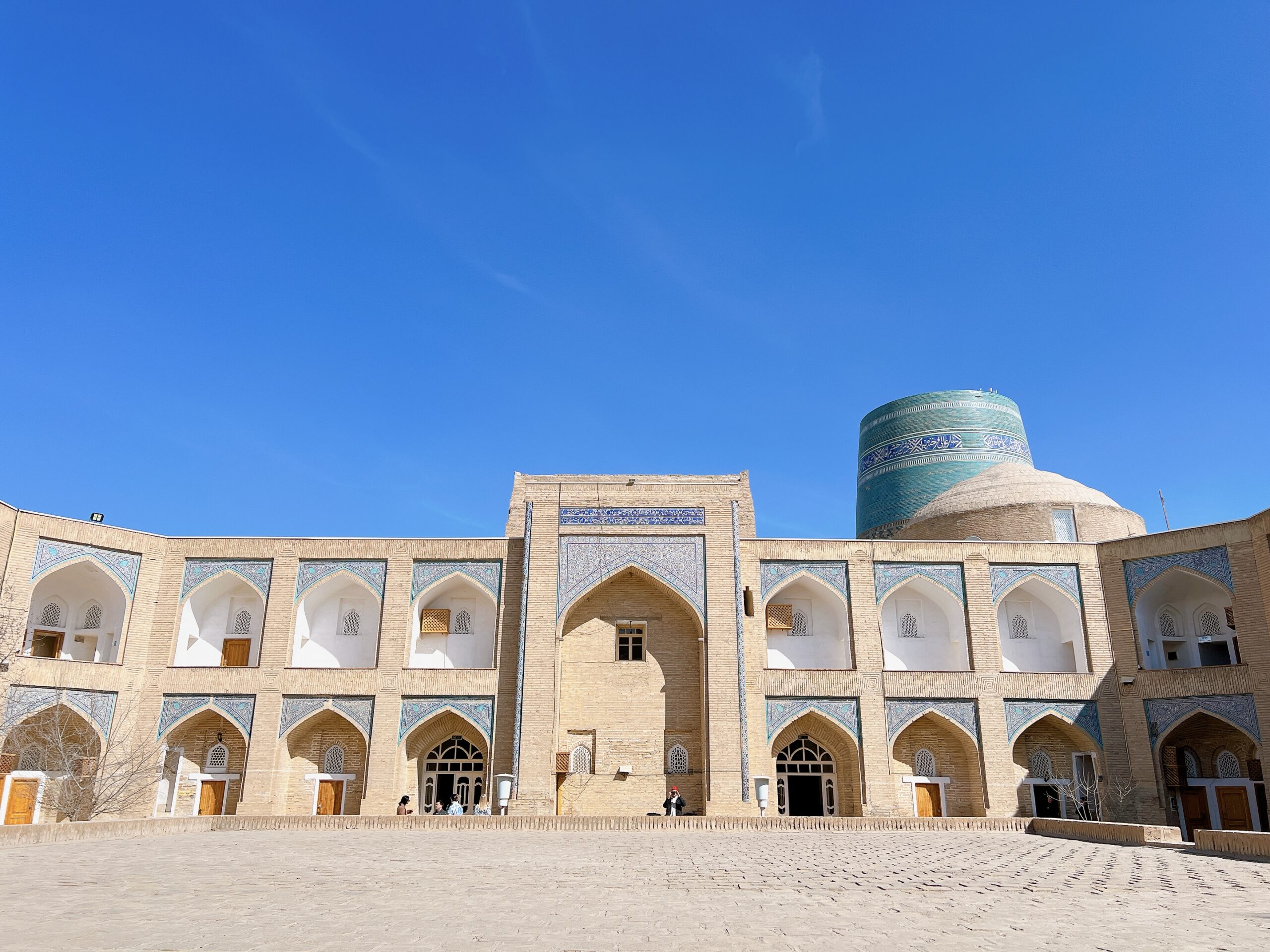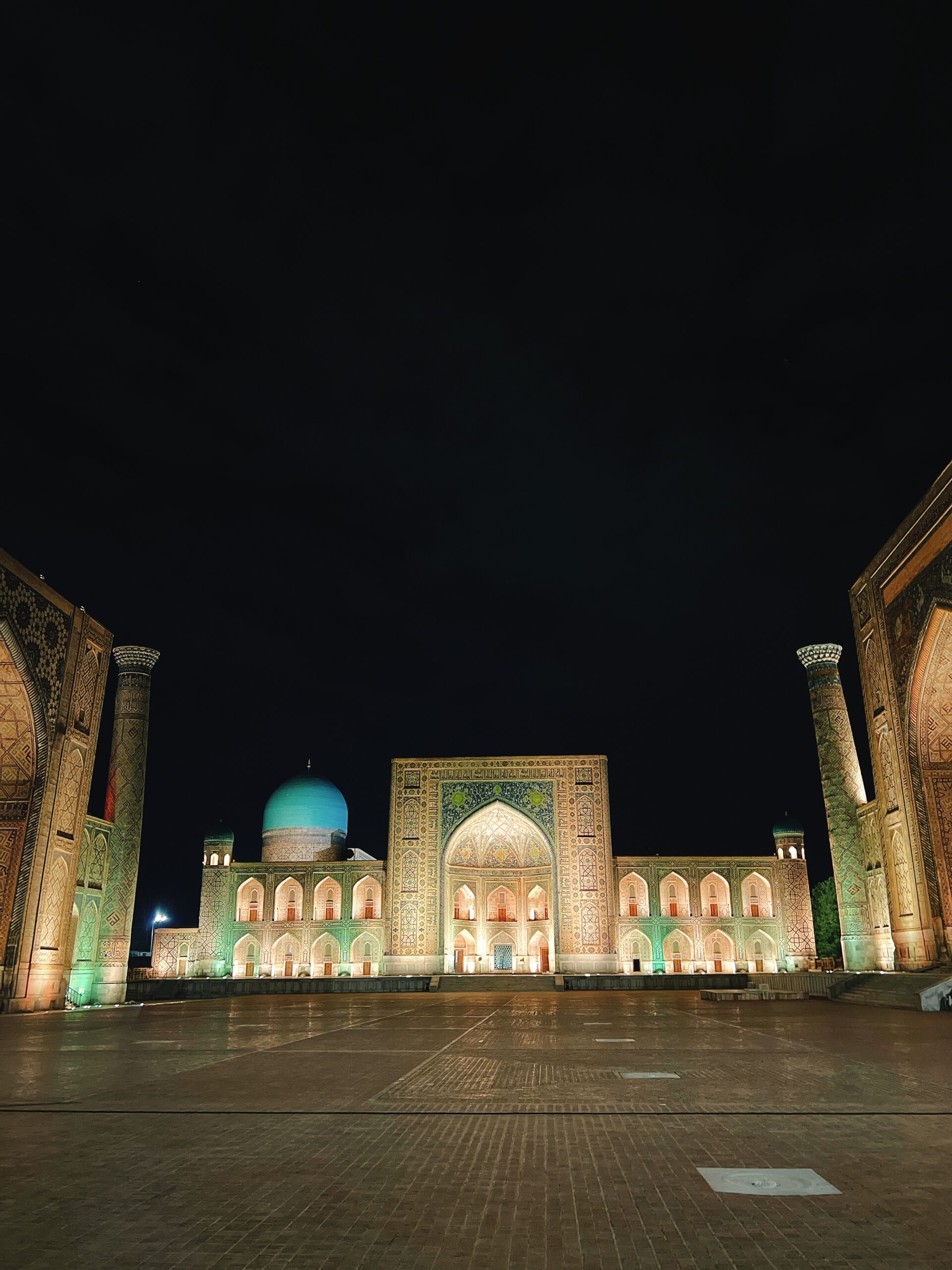
Central Asia’s holiest city, Bukhara has buildings spanning a thousand years of history, and a thoroughly lived-in old centre that has not changed too much in two centuries. It is one of the best places in Central Asia for a glimpse of pre-Russian Turkestan.

Most of the centre is an architectural preserve, full of madrassahs, minarets, a massive royal fortress and the remnants of a once-vast market complex. Government restoration efforts have been more subtle and less indiscriminate than in Samarkand, and the city’s accommodation options are by far the best and most atmospheric in the country. Here are some beautiful attractions in Bukhara that are not to be missed.
The Ark Fortress

Begin your journey at the ancient citadel of Bukhara, The Ark. This imposing fortress dates back over a millennium and offers a glimpse into the city’s tumultuous past. Explore its labyrinthine corridors, royal chambers, and the haunting remnants of its once-grand architecture. It was occupied from the 5th century until 1920, when it was bombed by the Red Army. It is about 80% ruins inside, except for a few remaining royal quarters which house several museum exhibits. The exterior of the fortress also makes a good photo opportunity, with its imposing high walls.

Kalon Minaret and Mosque
Marvel at the iconic Kalon Minaret, a towering symbol of Bukhara’s architectural prowess. Adjacent to the minaret, visit the Kalon Mosque, an architectural masterpiece adorned with intricate tilework and majestic domes. The mosque is big enough to accommodate around 10,000 people.

The Kalon Minaret has 14 ornamental bands, all different, including the first use of the glazed blue tiles that were to spread across Central Asia. Its 105 inner stairs, accessible from Kalon Mosque, have been closed off to tourists for several years.
Chor Minor

Explore the enchanting Chor Minor, a unique architectural gem adorned with four minarets and intricate tilework. Originally part of a madrasah, this picturesque structure exudes a sense of mystery and charm. The name means “Four Minarets” in Tajik, although they aren’t strictly speaking minarets but rather decorative towers.
Lyab-i-Hauz Complex

Experience the vibrant atmosphere of the Lyab-i-Hauz Complex, a historic square centered around a tranquil pool. Surrounding the square, discover ancient madrasahs, mosques, and bustling bazaars where you can immerse yourself in the sights, sounds, and flavors of Bukhara. The old tea-sipping, chessboard-clutching Uzbek men who once inhabited this corner of town have been moved on by local entrepreneurs who wish to cash in on the tourist trade.
Bolo Hauz Mosque

Beside a pool opposite the Ark’s gate is the Bolo Hauz Mosque, the emir’s official place of worship, built in 1718. Beside it is a now-disused water tower, built by the Russians in 1927. Admire the elegant simplicity of the Bolo Hauz Mosque, known for its beautifully carved wooden pillars and ornate ceiling. Take a moment to soak in the peaceful ambiance of this hidden gem tucked away from the bustling streets of Bukhara.
Necropolis of Chor-Bakr

Pay your respects at the Necropolis of Chor-Bakr, a sacred site revered by Muslims for centuries. Wander among the intricately decorated tombs and mausoleums, each telling the story of Bukhara’s revered saints and scholars.
Abdulaziz-Khan Madrasah
Conclude your journey with a visit to the Abdulaziz-Khan Madrasah, an architectural masterpiece dating back to the 17th century. Admire its stunning facade adorned with turquoise tiles and explore its well-preserved interiors, evoking a sense of bygone grandeur.

The highlight is the prayer room, now a museum of wood carvings, with jaw-dropping stalactites dripping from the ceiling. It is said that Abdulaziz had the image of his face covertly embedded in the prayer room’s mihrab to get around the Sunni Muslim prohibition against depicting living things.
Fayzulla Khojaev House

The house was built in 1891 by his father, Ubaidullah, a wealthy merchant. Fayzulla lived in the house until 1925, when the Soviets converted it into a school. Meticulous restoration of the elegant frescoes, latticework and Bukhara-style ceiling beams has returned it to its former glory.

Today in the house-museum you can see echoes of the former heyday of the Bukhara emirate, several expositions telling about the life of the father and son of the Khojaevs. Among the valuable exhibits of the museum, one can observe porcelain dishes, Uzbek musical instruments, elegant clothes of Bukharians. Visiting the extraordinary house-museum, you will be pleasantly surprised by the ethnographic exhibitions, magnificent decoration and examples of the luxurious life of Bukhara.
Places to Stay in Bukhara
📍Komil Hotel (boutique): Barakyon 40
📍Lyabi House Hotel (3-star hotel): Husainov 7
📍Salom Inn (B&B): Sarrafon 3
📍Golden Minaret (3-star Guesthouse which we stayed with a nice rooftop): Siddikiion street 21/23
📍Ambar Mekhtar Caravan Saray Hotel Buxara (Historic hotel): Bakhowuddin Nakshabandi 91
📍Minzifa (4-star boutique hotel): Eshoni 63
📍Grand Bukhara Hotel (4-star hotel slightly outside of the historic centre): Muminov 8
From ancient fortresses to ornate mosques, Bukhara’s architectural treasures offer a glimpse into the city’s illustrious past and enduring cultural legacy. To me, it is a close fight for favourite city in Uzbekistan, especially between Bukhara and Samarkand. These two cities are also well-linked by the high-speed trains which run daily.


